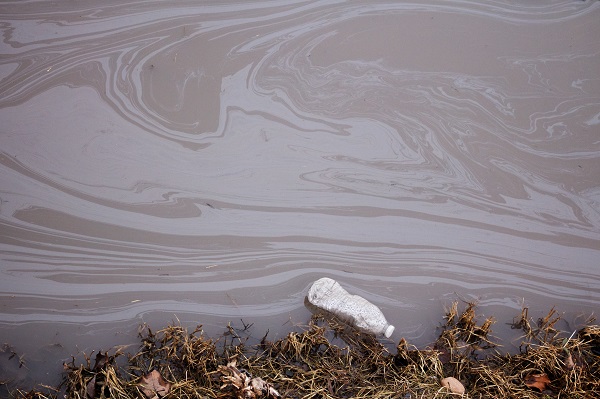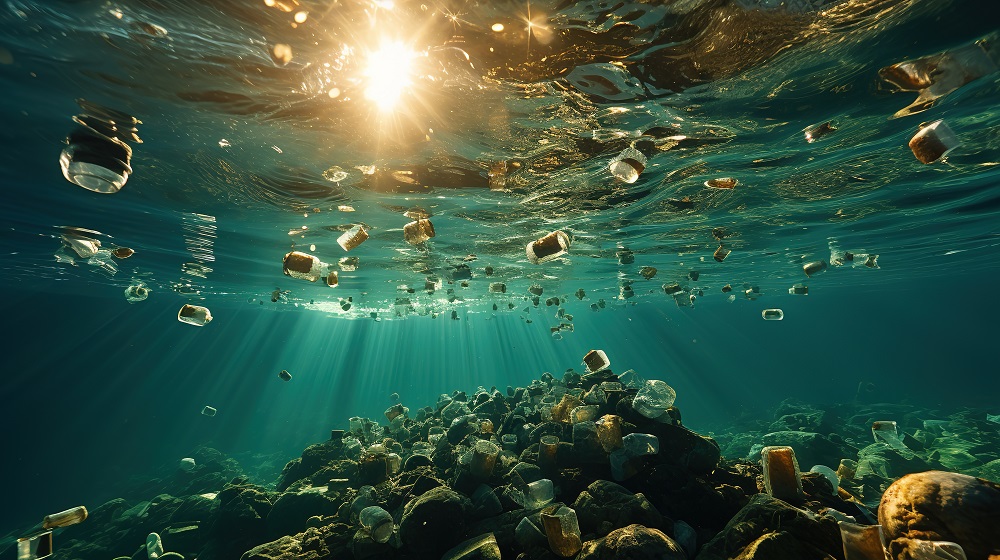On March 14th 2023 the US Environmental Protection Agency (EPA) announced a proposal to establish legally enforceable levels for six types of ‘forever chemicals’ known as per- and polyfluoroalkyl substances (PFAS). It is expected to prevent thousands of deaths and reduce tens of thousands of serious illnesses attributable to PFAS.
The rule would require public water systems to monitor PFAS levels, notify the public of these and reduce them if exceeding the proposed standards. Developed over several years and grounded in the authority that the EPA has from US Congress, through the Safe Drinking Water Act, the goal is to issue a final PFAS drinking water standard by the end of 2023 or early 2024. This will result in a standard to which all water systems in the US must adhere.
“This problem is so widespread, as many as 94 million people in the US have drinking water with those six PFAS at levels exceeding EPA’s proposed standards. These chemicals are everywhere and unfortunately more and more PFAS are showing up in more places across the entire country,” says Erik Olson, former EPA lawyer and senior strategic director for the Health and Food, People and Communities Program at the National Resources Defense Council.

Sarah Doll, national director for Safer States, a non-government organisation focused on chemical pollution, calls the EPA’s move “an important step. But it is in the context of a class of 12,000 chemicals, so it is the tip of the iceberg of the PFAS contamination crisis across the country.” Ms Doll adds that a federal government mandate means that states will need to start testing for PFAS levels, which is currently carried out unevenly across the country.
Radhika Fox, assistant administrator for the US EPA’s Office of Water, told Back to Blue that the body of evidence linking long-term exposure to PFAS to health is growing, and that drinking water is one of the most significant ways that people are exposed. “Placing regulations on drinking water is therefore critical for protecting the public and it is at the heart of the proposed national drinking water standard,” says Ms Fox.
Why PFAS matter
PFAS pose three problems, argues Mr Olson. “First, they tend to be very toxic at extremely low doses, we’re talking parts per trillion and parts per quadrillion. Secondly, they are extremely persistent, which is why we call them forever chemicals. Thirdly, they are extremely mobile in the environment. This is a really bad combination and there aren’t many chemicals that have those three bad attributes. You and I and pretty much everyone in the world is walking around with PFAS in their bodies because of the persistence and rapid movement of these in the environment.”
Two of the six PFAS—PFOA and PFOS—are legacy chemicals. Despite being phased out years ago, they remain widespread. Other PFAS are at least as widespread and are not tested or federally regulated, highlighting the breadth of the problem. The EU has taken a major step forwards by proposing to phase out more PFAS, but, as Mr Olson explains, that is yet to happen in the US. “PFAS are just spewed all over the US, there’s virtually no regulation on their use here. We’ve been trying very hard to turn the faucet off.”

PFAS are used in a wide variety of substances, including textiles, stain resistance, water resistance and firefighting foams. In many cases, there are readily available alternatives, making upstream efforts to phase out more PFAS in manufacturing an imperative. PFAS in firefighting foam has been phased out entirely by several airports around the world, for instance, but is yet to be regulated in the US, according to Mr Olson.
Positively, individual states could help to drive national improvement if they move to eliminate PFAS in products. “If Minnesota or Ohio or California says you cannot have PFAS in textiles then, because companies all sell it, the effect is to impact supply chains [nationally].”
Yet even if every PFAS in use was outlawed immediately, there would be a need to deal with long-term contamination of groundwater and sediment. PFAS move easily between air, water and land, creating a pollution challenge best addressed by preventing PFAS being used in the first place. “There is tremendous innovation and research and development under way across the globe on PFAS. There are new approaches to destruction and disposal under way and other technologies such as drinking water systems using treatment technologies like granulated activated carbon are proven to make water safe,” said Ms Fox.
Yet more is needed to handle the PFAS filtered from water. “You have a concentrated source of PFAS on carbon that we no longer want to incinerate or place in a landfill. We need destructive technologies that are ultimately going to stop us from distributing it back into the environment,” explains Michelle Crimi, Clarkson University dean of the graduate school and professor of environmental engineering, who is developing technologies to destroy PFAS in groundwater.
There are approaches for destroying PFAS, but they require energy-intensive pumping of water out of the ground and are therefore expensive and may simply create new sustainability pressures in the form of increased emissions. Professor Crimi is working on technology to destroy PFAS using ultrasound waves deployed underground. There, they can place horizontal wells containing a reactor that destroys the PFAS as water runs through it.
This would cut off plumes that feed the dilute concentrations of PFAS in groundwater that are so widespread. While there is no single solution to remove the problem at the moment, Professor Crimi believes the EPA proposal could drive more R&D. At present, R&D into remediation activities are ongoing in Australia and Sweden.
Incineration brings sustainability and viability challenges of its own. “This is the strongest bond in chemistry, so you need incredibly high heat to break it down in an incinerator,” says Ms Doll.

From talk to action
Implementing the regulation will require funding at the federal level, but Professor Crimi expressed concern that the costs would trickle down to consumers, making affordability a community-by-community basis. “As we work towards solutions, we need to make sure that we really develop and advocate for equitable solutions, so that our lowest income communities are not carrying the burden. I’m pleased to see that there’s funding tied to these mandates.”
Under the leadership of the US president, Joe Biden, the bipartisan infrastructure law included around US$50m in investment for water, with a historic US$10bn dedicated to emerging contaminants such as PFAS. “We did a very sophisticated and robust economic analysis around our proposal and we’re estimating that costs of the regulation are US$770m, considering the 49,000 water systems around the country,” stated Ms Fox.
Those costs concern implementing monitoring systems and installing treatment technologies. The benefits, however, have been quantified at over US$1.2bn due to fewer people getting cancer, and lower incidences of conditions like heart attacks, strokes and birth complications. “The benefits to the American people to our human health and wellness really outweigh the money required for implementation.”
Read more in The Invisible Wave report

Chemical pollution – of land, air, rivers, watersheds – has been a festering issue for decades, occasionally prompting resolute action. But only recently has the scale of chemical pollution become more apparent. Read the full report here.

THE SUSTAINABILITY PROJECT

WORLD OCEAN INITIATIVE
WE WOULD LOVE TO HEAR FROM YOU
We welcome your feedback and comments.
If you have an editorial or media related request, a member of the media team will get back to you.
EXPLORE MORE CONTENT ABOUT THE OCEAN
Back to Blue is an initiative of Economist Impact and The Nippon Foundation
Back to Blue explores evidence-based approaches and solutions to the pressing issues faced by the ocean, to restoring ocean health and promoting sustainability. Sign up to our monthly Back to Blue newsletter to keep updated with the latest news, research and events from Back to Blue and Economist Impact.
The Economist Group is a global organisation and operates a strict privacy policy around the world.
Please see our privacy policy here.
THANK YOU
Thank you for your interest in Back to Blue, please feel free to explore our content.
CONTACT THE BACK TO BLUE TEAM
If you would like to co-design the Back to Blue roadmap or have feedback on content, events, editorial or media-related feedback, please fill out the form below. Thank you.
The Economist Group is a global organisation and operates a strict privacy policy around the world.
Please see our privacy policy here.




 World Ocean Summit & Expo
2025
World Ocean Summit & Expo
2025 UNOC
UNOC Sewage and wastewater pollution 101
Sewage and wastewater pollution 101 Slowing
the chemical tide: safeguarding human and ocean health amid
chemical pollution
Slowing
the chemical tide: safeguarding human and ocean health amid
chemical pollution Hazardous chemicals in plastics - the discussions at INC
Hazardous chemicals in plastics - the discussions at INC
























